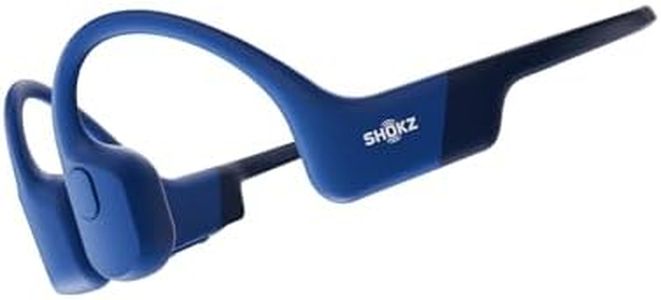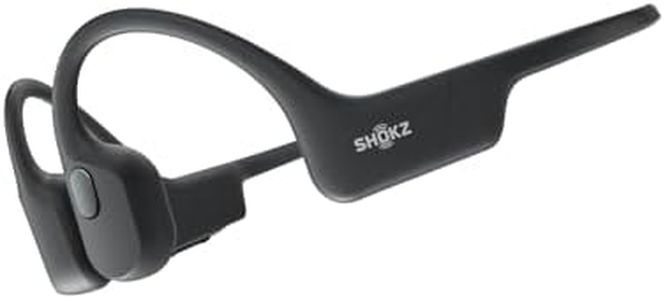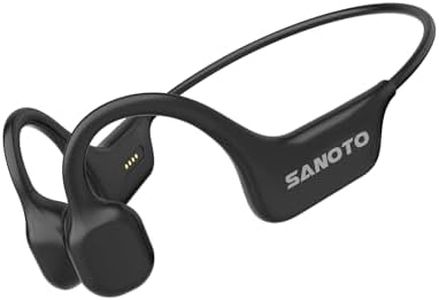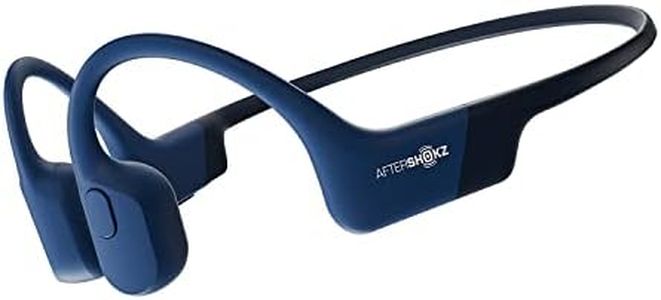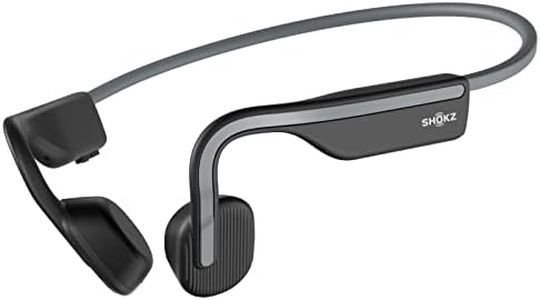We Use CookiesWe use cookies to enhance the security, performance,
functionality and for analytical and promotional activities. By continuing to browse this site you
are agreeing to our privacy policy
10 Best Bone Conduction Headphones For Iphone
From leading brands and best sellers available on the web.Buying Guide for the Best Bone Conduction Headphones For Iphone
Bone conduction headphones are a unique kind of audio device that transmit sound through your cheekbones, leaving your ears open to surrounding sounds. This makes them particularly suitable for people who want to stay aware of their environment while listening to music or taking calls, such as runners, cyclists, or commuters. When shopping for bone conduction headphones for your iPhone, it's important to understand the features that will ensure a comfortable experience, good sound quality, and compatibility with your device.Bluetooth VersionBluetooth is the wireless technology these headphones use to connect to your iPhone. Newer Bluetooth versions (like 5.0 and above) provide a more stable connection, better sound quality, and improved battery life. Older versions might still work, but may offer shorter range and sometimes slower pairing. For most users, a headphone with Bluetooth 5.0 or newer tends to offer the best overall experience, especially for outdoor activities or multitasking.
Water and Sweat ResistanceMany people use bone conduction headphones during workouts or outdoor activities, where sweat or rain exposure is likely. Water and sweat resistance is measured by an IP rating. 'IPX4' means decent sweat/water resistance for light sweat or minimal splashes, while higher numbers like 'IPX7' can survive being submerged briefly. If you’ll use your headphones for exercising or in unpredictable weather, aim for a higher IP rating; if you’re mostly indoors, lower ratings may suffice.
Battery LifeBattery life describes how long you can use the headphones before needing to recharge. It’s usually stated in hours. Shorter battery life (around 4-6 hours) means more frequent charging but is fine for short daily sessions. Longer life (8-10+ hours) is ideal for all-day use or long commutes. Think about your habits: if you tend to listen for extended periods, opt for a model with a longer battery life to minimize interruptions.
Comfort and FitSince bone conduction headphones sit on your cheekbones and wrap around your head, comfort can vary a lot. This depends on weight, the flexibility of the band, and the materials used. Lightweight and flexible bands are usually more comfortable for long-term wear, while heavier or rigid designs could cause discomfort. If you plan to use the headphones for hours at a stretch or during active movement, look for ergonomic shapes, lighter weight, and adjustable bands for a personalized fit.
Microphone QualityBone conduction headphones often include a microphone for calls or voice commands. A better microphone ensures your voice is clear, even in outdoor or noisy settings. Some headphones feature noise-cancelling mics, which reduce background noise, making them more suitable if you take calls in busy environments. Consider your usage—if you frequently make calls, a model with enhanced microphone quality is important.
Sound QualityBone conduction headphones won’t deliver the same depth or bass as traditional in-ear or over-ear headphones, but sound quality still varies. Some models produce clearer or louder audio, while others may leak more sound to those around you. If you are particular about audio clarity or listen to podcasts, pick a model known for balanced mid and high tones. If you listen mostly to music and want a more immersive experience, look for ones with improved bass technology, though keep expectations realistic.
Controls and FeaturesEase of use is enhanced by intuitive button placement or touch controls for playback, volume, and calls. Some headphones offer app support for more customization, while others support quick-swap pairing for multiple devices. If you want to adjust settings or connect quickly between devices, consider these convenience features. Think about your habits—if you frequently switch between your iPhone and other gadgets, multipoint pairing might be helpful.


